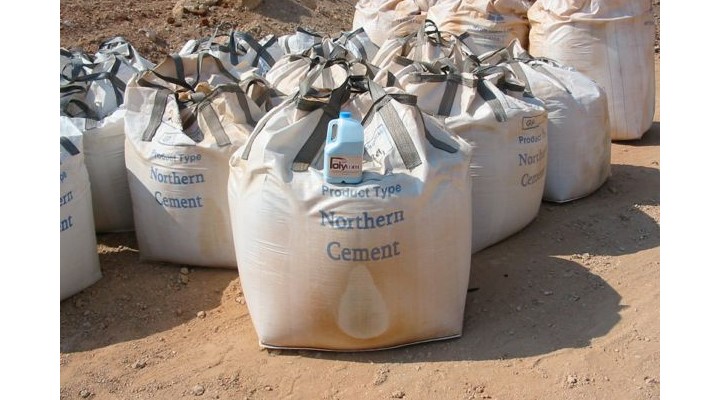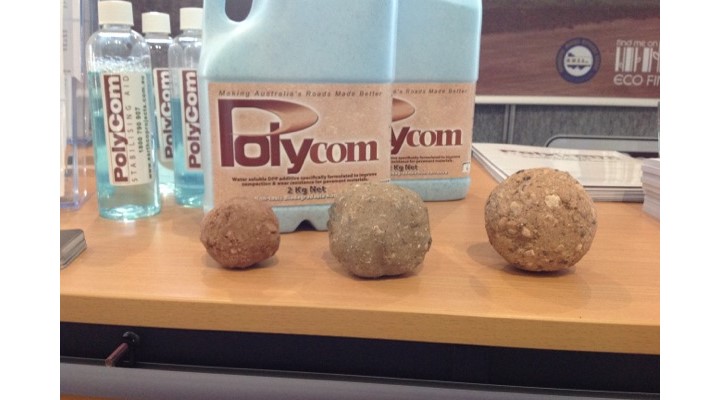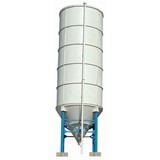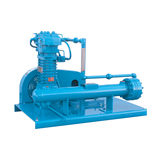So how exactly does PolyCom Stabilising Aid compare to cement?
Let's take a 28 kilometre road – 6 metres wide and 150mm deep. In the past, this road would be stabilised with cement – in this case, 1000 tonnes of it. in other terms, that's 1,000,000 kilograms.
Approximately 40 trucks are required to transport one million kilograms of cement.
40 trucks carrying this much cement does a lot of damage to the road network, producing a catch 22 when trying to repair damaged roads. The use of bulk cement requires costly, fuel consuming distribution and mixing equipment.
Furthermore, for every tonne of cement, around 900kg of CO2-e is produced. Stabilising this road with cement would produce 900,000kg or 900 tonnes of greenhouse gas emissions.
Now let's consider the alternative.
Just one tonne of PolyCom will stabilise this same stretch of road. PolyCom can be delivered to site in a van or utility vehicle, and requires around half the amount of water to apply.
For this entire job, PolyCom manufacture would emit 1.57 tonnes of greenhouse gas - that's 99.8 per cent less than cement.


































-205x205.jpg)